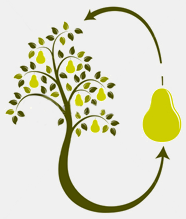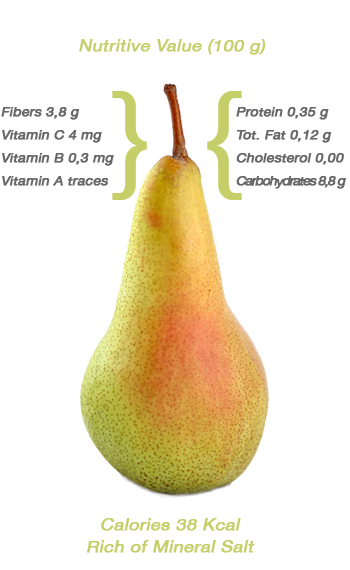The heart of production
 Designing the creation of a pear orchard is something like painting colours, ideas and nuances. It is a framework that requires extensive technical expertise and passion for the land, a painting that Fruit Modena Group knows well. After initially assessing the suitability of the site we decide which varieties to grow. Then we prepare the soil by ploughing and tillage to improve rooting and surface drainage. Bedded whips – from grafts – are then planted out to ensure better adaptability to the terrain and resistance to adverse conditions. In our sector, time is fundamentally important: a pear tree can produce fruit in the first two years of life, but it is preferable to use this time to manage the shape and growth of the tree. The period of full production begins approximately in the 7th or 8th year and can last for up to 18 years, after which it gradually declines. In March, the plant resumes its life cycle after the winter: the pear orchards are initially white during blossoming time and then they acquire a green tinge that gets brighter over time. Not all the blossoms produce a fruit because in this phase, called setting, many factors interfere. These are mainly environmental factors that may cause the fruitlets to fall. After this period we focus on the growth of the remaining fruit which starts its actual ripening process. Fruit Modena Group knows how to take care of their crops and so from the awakening of the plant until harvest various actions are taken to manage the orchard. The pear harvest begins in mid-July, but the period of greatest activity occurs from August to mid-September, depending on the variety. During this month and a half of harvest, the fruit is taken by the farmers to our warehouses and is then stored in cold rooms of various capacities.
Designing the creation of a pear orchard is something like painting colours, ideas and nuances. It is a framework that requires extensive technical expertise and passion for the land, a painting that Fruit Modena Group knows well. After initially assessing the suitability of the site we decide which varieties to grow. Then we prepare the soil by ploughing and tillage to improve rooting and surface drainage. Bedded whips – from grafts – are then planted out to ensure better adaptability to the terrain and resistance to adverse conditions. In our sector, time is fundamentally important: a pear tree can produce fruit in the first two years of life, but it is preferable to use this time to manage the shape and growth of the tree. The period of full production begins approximately in the 7th or 8th year and can last for up to 18 years, after which it gradually declines. In March, the plant resumes its life cycle after the winter: the pear orchards are initially white during blossoming time and then they acquire a green tinge that gets brighter over time. Not all the blossoms produce a fruit because in this phase, called setting, many factors interfere. These are mainly environmental factors that may cause the fruitlets to fall. After this period we focus on the growth of the remaining fruit which starts its actual ripening process. Fruit Modena Group knows how to take care of their crops and so from the awakening of the plant until harvest various actions are taken to manage the orchard. The pear harvest begins in mid-July, but the period of greatest activity occurs from August to mid-September, depending on the variety. During this month and a half of harvest, the fruit is taken by the farmers to our warehouses and is then stored in cold rooms of various capacities.
Vermilion is the colour of autumn, and vistas of the orchards feature foliage with this new colour before the fall of the leaves. The winter period is the most suitable for pruning, during which time the pears can be kept in cold rooms for varying periods depending on the varietal characteristics. Every week, our three warehouses ship several hundred tons of pears on various routes to meet the needs of an increasing number of customers who are becoming more aware of the product.




